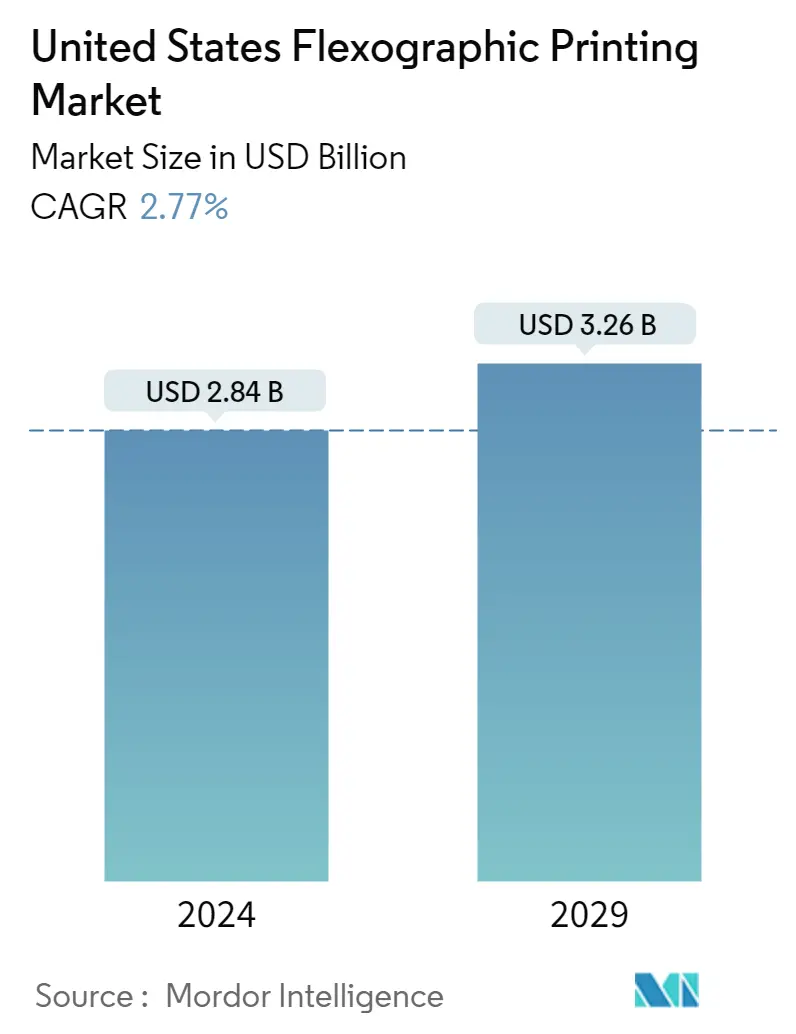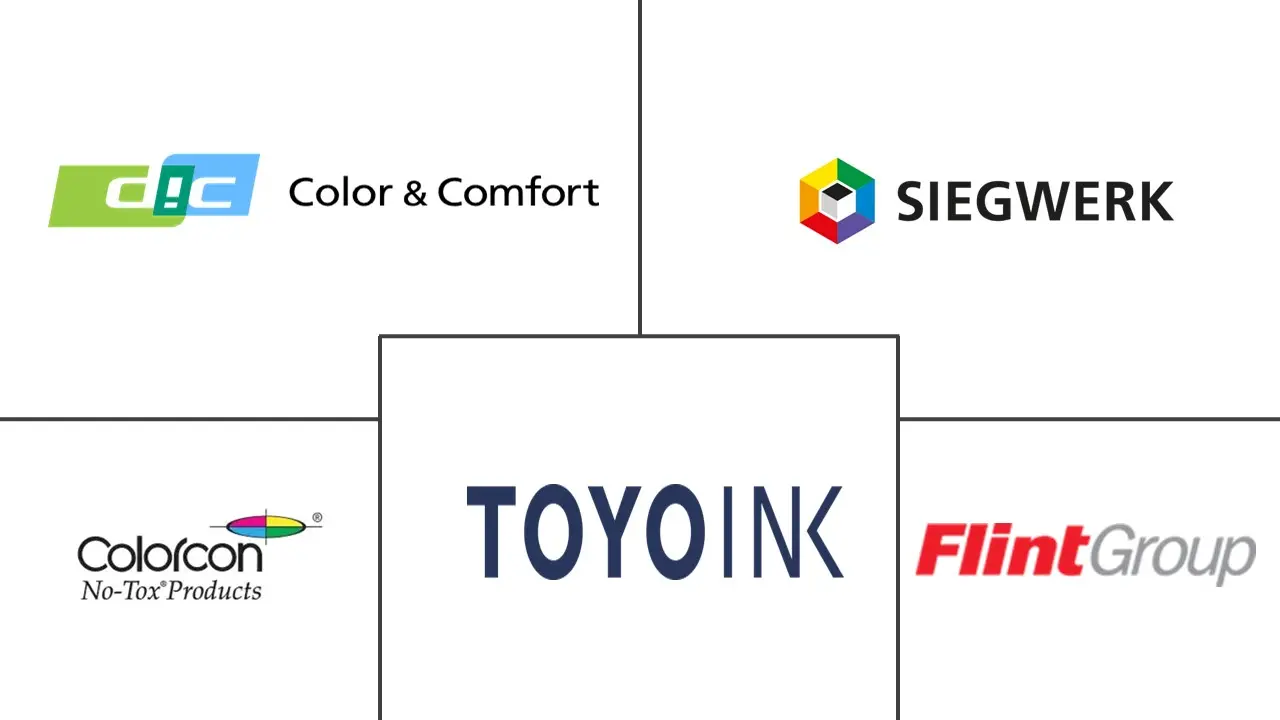Market Size of United States Flexographic Printing Industry

| Study Period | 2019 - 2029 |
| Base Year For Estimation | 2023 |
| Market Size (2024) | USD 2.84 Billion |
| Market Size (2029) | USD 3.26 Billion |
| CAGR (2024 - 2029) | 2.77 % |
| Market Concentration | Low |
Major Players
*Disclaimer: Major Players sorted in no particular order |
Need a report that reflects how COVID-19 has impacted this market and its growth?
United States Flexographic Printing Market Analysis
The United States Flexographic Printing Market size is estimated at USD 2.84 billion in 2024, and is expected to reach USD 3.26 billion by 2029, growing at a CAGR of 2.77% during the forecast period (2024-2029).
The current market estimations are based on ink technology and printing equipment for various end-user applications, such as labels, cartons, and flexible packaging.
- Technological advancement is gaining popularity in the flexographic printing market. Prominent companies operating in the flexographic printing sector are focused on developing new technical solutions to meet consumer demand and strengthen their positions.
- With consumer, retailer, and client demands shifting, the global packaging printing marketplace is changing rapidly. Increasing demand for new variety and shorter run lengths are driving advancements in flexographic technology, which aims to improve efficiency in an increasingly digitalized market.
- UV flexo printing inks and varnishes are widely used and continue gaining popularity. A major justification for using UV curing technology is the absence of solvents, which lowers emissions and is probably one of the original justifications. But because of their superior print quality, quick readiness for use, good adhesion to flexible and a variety of other substrates, high chemical and product resistance, and fast running speeds, UV-cured inks are currently being taken into consideration in many printing-related fields. Almost all finished product substrates, including yogurt cups and tops, soup and spice packets, flexible packaging, milk and juice cartons, pet food packaging, and even cigarette packs, are now printed on with UV-curing Flexoinks.
- The printing industry has historically been labor-intensive, with a strong relationship between the trend in turnover and employment. Machinery design, digitalization, computerization, etc., have significantly improved productivity and transformed this industry so that growth capacity is no longer linked to direct employment. However, the rising raw material costs during the procurement process limit several market players' operability. The raw materials used in flexographic printing include paper, ink, printing materials, and other chemical products.
- The huge demand for food, beverage, and medicines caused due to panic-driven purchases and several supply chain constraints resulted in mixed COVID-19 impact on the flexographic printing market growth. Because of the growth in the demand for packaged foods, packaging used to be mainly off-limits to short-run-oriented printing systems. With changes in consumption patterns, manufacturers' development of advanced digital presses has become a turnaround solution for packaging printing manufacturers to cater to the brands. Printing and packaging are essential to people's lives, and proper management enables the printing industry to adapt and serve the needs of end customers during the forecast period.
